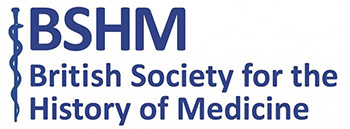Author Sandra Hempel offers tips to newcomers and a few to more experienced writers
The history of medicine is fertile ground for writers. It offers us a wonderful mix of discoveries, controversies, mysteries and characters, and all of this against a background of life and death. The writer doesn’t have to look far for tales to tell.
And if this sounds more like a list of ingredients for a popular thriller than for a serious, research-based piece of work, I would argue that the two genres have much more in common than might at first appear. Or at least they should if the writer is doing his or her job.
My first two books are both fast-paced narratives, in one case with a quest at its core, and in the other, a murder. However, both involved a huge amount of research among primary sources, as well as dialogues with academics, in order to ensure that both the science and the narratives were informative and correct.
The starting point for any material is always the question: Who are you writing for? Inexperienced authors sometimes write the piece that they want to write, in the style and to the length that they choose, and then submit to an editor or publisher. That rarely works.
Before you invest time and effort, however, look carefully at the publication that you have in mind or at what the book-buying public is currently reading. Check first that the journal or magazine even accepts readers’ contributions – not all do – and then ask if your idea is of interest. Some publications have guidelines on their websites describing the type of material they are looking for and giving helpful details such as word counts.

Physician and medical reformer Thomas Percival from Warrington, Lancs.
Don’t confine yourself to national publications. Try the county magazine and the local paper as well as the history society and community association newsletters. If you can find a subject with a local angle, then you will vastly improve your chances.
Is there a local historical figure who did some interesting work? Was there an outbreak of disease in the past that the doctors struggled to control? What about a trial where the medical evidence played a key role?
Now, of course, the internet offers new outlets such as blogging and self-publishing where you are free to write whatever you want without having to go through an intermediary. Even so, you still have to engage your readers if you hope to reach an audience.
Sandra Hempel is an author, editor and tutor running courses in writing. She has written for a wide range of national newspapers and specialist medical journals including The Lancet. She has published three books on the history of medicine. For more information, contact Sandra at www.sandrahempel.co.uk

 set up a prominent engineering firm. He developed a practice in cardiothoracic surgery, performing over 100 heart operations a year by the 1950s. However, many cases of heart valve disease, including those resulting from regurgitation (leaking) rather than stenosis (narrowing), remained inoperable and often fatal.
set up a prominent engineering firm. He developed a practice in cardiothoracic surgery, performing over 100 heart operations a year by the 1950s. However, many cases of heart valve disease, including those resulting from regurgitation (leaking) rather than stenosis (narrowing), remained inoperable and often fatal.
 Chesterman realised cardiopulmonary bypass would be key to further procedures of this kind. He subsequently visited Walton Lillehei and Richard De Wall in the US, who had developed the pump oxygenator. Chesterman went on to build and use his own machine in Sheffield on 26 February 1957, one of the first outside America to do so. (Figure 4)
Chesterman realised cardiopulmonary bypass would be key to further procedures of this kind. He subsequently visited Walton Lillehei and Richard De Wall in the US, who had developed the pump oxygenator. Chesterman went on to build and use his own machine in Sheffield on 26 February 1957, one of the first outside America to do so. (Figure 4)  As well as technological contributions, Chesterman’s legacy includes the subsequent flourishing of a cardiothoracic unit in Sheffield, now housed in the Chesterman Wing at the Northern General Hospital. In addition, he had an interest in archaeology and, after retiring from clinical practice, he founded the University of Sheffield Osteology Laboratory.
As well as technological contributions, Chesterman’s legacy includes the subsequent flourishing of a cardiothoracic unit in Sheffield, now housed in the Chesterman Wing at the Northern General Hospital. In addition, he had an interest in archaeology and, after retiring from clinical practice, he founded the University of Sheffield Osteology Laboratory. 

